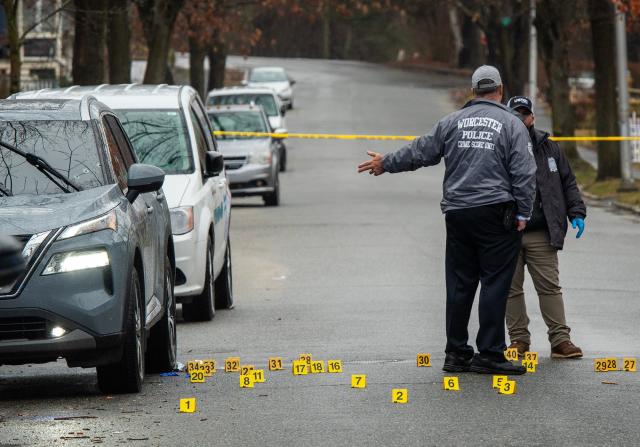Two young women were unintentionally shot on Monday night in Chicago’s Englewood neighborhood, a disturbing event that highlights the ongoing problems with urban crime. The attack, which happened at 8:40 p.m. in the 6000 block of South Racine Avenue, brings to light the dangerous unpredictability that can taint daily life in areas where gun violence is a problem. The victims, who were 20 and 19 years old, were just crossing the street when a shooter opened fire, injuring both of them.
Local law police and emergency personnel sprang into action in the early aftermath of the shooting, giving the victims vital first assistance and rushing them to the University of Chicago Medical Center. Both women were described as being in fair condition when they arrived at the hospital, according to police reports. The 20-year-old was wounded in her left arm and the 19-year-old had injuries to her right arm, suggesting that they were probably in the line of fire when the attacker fired his firearm.
The Englewood neighborhood, like many others in the city, has been working relentlessly to battle the stigma of violence and create a more secure and nurturing environment for its citizens. However, this occurrence has cast a shadow on the neighborhood. The attack’s randomness adds another degree of unpredictability and terror, undermining the community’s fortitude and continuous attempts to rethink its public areas as havens of security and well-being.
In reaction to the shooting, the Chicago Police Department has intensified its investigation into the crime, depending on local security footage and witness testimonies to identify the offender. But given the frequently quiet neighborhoods impacted by violent crimes and a pervasive skepticism in law enforcement’s ability to bring about change without further alienating the same people they are supposed to protect, investigating such cases will undoubtedly present substantial obstacles.
The most recent occurrence in Englewood calls into question the tactics the city is using to prevent gun violence and safeguard its residents. The continuation of such violent acts highlights a complex web of socio-economic and cultural elements that contribute to the problem, even in the face of multiple attempts aimed at lowering the incidence of shootings and enhancing relations between the police and the community. Systemic inequality, limited access to jobs and education, and the widespread availability of firearms all contribute to violent cycles that rip apart communities.
Following the massacre, community activists and civic leaders in Englewood and elsewhere have stepped up their efforts for a more comprehensive strategy to address the underlying causes of violence. In addition to increased police presence and improved crime prevention tactics, this entails significant funding for mental health services, community development projects, and educational efforts that offer alternatives to a life of violence.
In addition, the event is a sobering reminder of the human cost of gun violence. Real people daughters, sisters, friends whose lives are irrevocably changed by the agony of such situations lie behind the numbers and headlines. The psychological scars from the incident may not go away, impacting not just the victims but also their families and the larger community. The physical wounds may heal.
The people of the Englewood area are once again tested as they deal with the aftermath of this most recent act of violence. There is a strong sense of resolve to keep moving forward and not allow this catastrophe define their community or undo the gains they have made recently. In an effort to help the victims and their families, community gatherings and vigils have been planned. These events provide a forum for shared grieving and serve as a reminder of Englewood’s dedication to peace and harmony.
Additionally, the shooting sparks a national and state-level dialogue regarding public safety and gun control laws. Proponents of more stringent gun control regulations view this tragedy as another proof of the pressing need for comprehensive legislation that would keep weapons out of the wrong hands. Opponents, meanwhile, push for a more sophisticated strategy that targets the underlying causes of gun violence while upholding law-abiding citizens’ Second Amendment rights.
The Englewood shooting serves as a sobering reminder of the difficulties and urgency that Chicago and its surrounding neighborhoods face in maintaining the safety and security of their citizens. It is a call to action for decision-makers, law enforcement, and community people to work together to create a future in which these kinds of instances become uncommon and every neighborhood’s streets can be safely navigated.
Read Also – FireHouse Frontman C.J. Snare Passed Away: What Is Cause Of Death?

